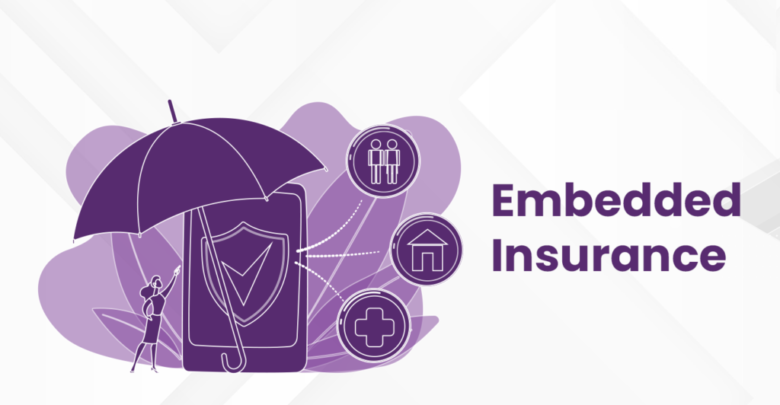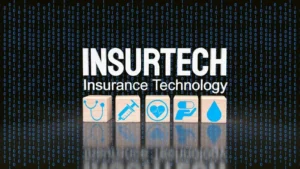Embedded insurance has been silently changing how many people think about coverage. This type of insurance is different from the traditional one because it is integrated into a product or service and does not require a separate purchase or long waiting periods. It is much easier to buy insurance at the same time one purchases a phone or rents a car. Unlike in the past, it is now more accessible than ever. Moreover, it simplifies the customer experience while extending the reach of insurance to untapped markets. In this article, we will analyze how embedded insurance works, what it is, and why it is becoming so important in the sector. I don’t suppose you own a business or consider yourself a consumer, but if you do, learning about this revolution will enable you to make more informed choices revolving around coverage.
What Do You Mean by Embedded Insurance?
An insurance product that is embedded is intuitively integrated as an add-on during the checkout process of a different product and service. The modern method where insurance can be added to purchases as an afterthought is termed embedded insurance. For instance, a smartphone seller may offer device protection insurance directly during the purchase of the smartphone. On the other hand, when booking flights, one may also book travel insurance in the same transaction as well. This will help to have a streamlined approach that provides policies without needing extra paperwork.
How Embedded Insurance Works:
It is simply partnered with a brand to offer the coverage at the point of purchase. This type of insurance service is provided by partnering with retailers, service providers, or technology companies that enable the covered services and products to enter their platforms. Insurers offer the covered options during the purchase of basic items. The process takes minimum effort from the buyer, and in a matter of seconds, using their cell phone, the required document can be obtained. Data analytics, advanced technology, and sophisticated algorithms work together, ensuring the customer’s requirements will determine the many risks that come along with purchasing its associated insurance options.
Benefits for Consumers:
For consumers, embedded insurance is the most convenient form of coverage. Clients do not have to spend time and resources searching for separate policies because coverage is provided during the purchase of products and services. In the case of purchase insurance, clients are already protected at the time of payment. Furthermore, embedded insurance is competitively priced because the costs are incorporated into the overall deal. For a large number of consumers unfamiliar with insurance policies, this approach is easier to access as it removes the complexity of traditional policies.
Benefits for Businesses:
A business stands to gain significantly from embedded insurance. Clients are offered more convenience and better customer service, which helps improve their experience. For most businesses, this serves as an additional source of revenue because a share of the premium is offered to businesses. In addition, embedded insurance sets a company apart from its market rivals, enhancing its appeal to consumers. An example of this is an electronics retailer that offers device protection insurance, which is likely to lead to increased sales and customer satisfaction compared to competitors that do not offer these services.
The Role of Technology in Embedded Insurance:
The technology we have available to us today helps put embedded insurance into action. With the help of modern data analytics and AI, insurers can offer real-time risk assessment and provide options for tailored coverage. There’s also smooth connectivity blending APIs with businesses and insurers, which guarantees an enhanced user experience. Customers can, with the help of mobile applications, add insurance to their purchases with a tap. We can only imagine how difficult incorporating insurance into purchases would be without tech today.
Examples of Embedded Insurance in Action:
Embedded insurance is currently being applied in various sectors without customers even realizing it. When renting a car, the rental company offers collision damage waiver insurance, which is automatically added to the client’s booking flow. Most e-commerce websites sell product protection plans for appliances and electronics too. For the travel sector, airlines and booking platforms sell travel insurance alongside tickets, and in ride-sharing apps, accident coverage is offered for drivers and passengers. All of these show the ease with which embedded insurance is accepting and adapting to our daily lifestyles.
Challenges and Considerations:
The benefits of embedded insurance are unrivaled, but some challenges come with it. One of the embedded insurance cons is ensuring that customers comprehend the coverage being purchased. Due to the convenience of the purchasing process, customers run the risk of overlooking or skimming the terms and conditions. There must be a partnership between insurers and businesses to disclose the policies that are being offered transparently. Furthermore, there is additional sophisticated compliance regulation because embedded insurance usually spans multiple jurisdictions and industries. Given these challenges, however, the advantages associated with embedded insurance far surpass the challenges, indicative of the trend’s potential for the future.
The Future of Embedded Insurance:
The future of embedded insurance is optimistic. With further technological advancement, we will likely be provided with uniquely tailored insurance solutions. Integrated IoT devices, such as smart home systems and wearable technology, are likely to be able to leverage real-time information for risk assessment and further improve embedded insurance. Moreover, as more companies start recognizing the point-of-sale insurance value, the growth of the embedded insurance market will become accelerated. This understated revolution is poised to transform the entire insurance world by providing easy, cheap, and convenient access to insurance for all.
Conclusion:
Our understanding of coverage has dramatically changed with embedded insurance, as it is now assimilated within the items and services we interact with daily. With insurance at the point of sale, consumers are receiving unprecedented convenience as coverage becomes easier, cheaper, and more accessible than ever before, granting businesses new avenues for growth. All the APIs make this technologically driven transformation possible, alongside data analytics. Despite challenges, there is tremendous potential in embedded insurance due to innovation’s virtue. As this ‘silent revolution’ unfolds, the future of the industry is guaranteed and transformable as we know it, because there is now a reliable way to protect things that matter the most to us: insurance.
FAQs:
1. What is embedded insurance?
Embedded insurance is the addition of insurance onto other goods or services where a cover can be conveniently purchased along with the primary item.
2. How does it benefit the consumers?
Through the convenience of accessibility as an uncomplicated process, insurance becomes competitively priced and complimentary from the moment a purchase is made.
3. What role does technology play in embedded insurance?
Real-time risk evaluation and seamless implementation of insurance are enabled by technology through data analytics, APIs, and coverage platforms.
4. Can businesses benefit from offering embedded insurance?
Yes, businesses can improve customer satisfaction, customer retention, and even profit from offering insurance at the point of sale. Why? Because adding insurance helps in capturing market share.
5. What are some examples of embedded insurance?
These include protection plans for gadgets, trip insurance when booking airline tickets, and car rental insurance for damages.




